How Florida Agriculture Weathered Hurricane Matthew’s Greatest Hits [Slideshow]
We were set to get blasted. Matthew, a major hurricane, which already caused havoc in Haiti, crushed the eastern tip of Cuba, and beat up the Bahamas, was now looking to make a beeline for Florida’s East Coast.
-
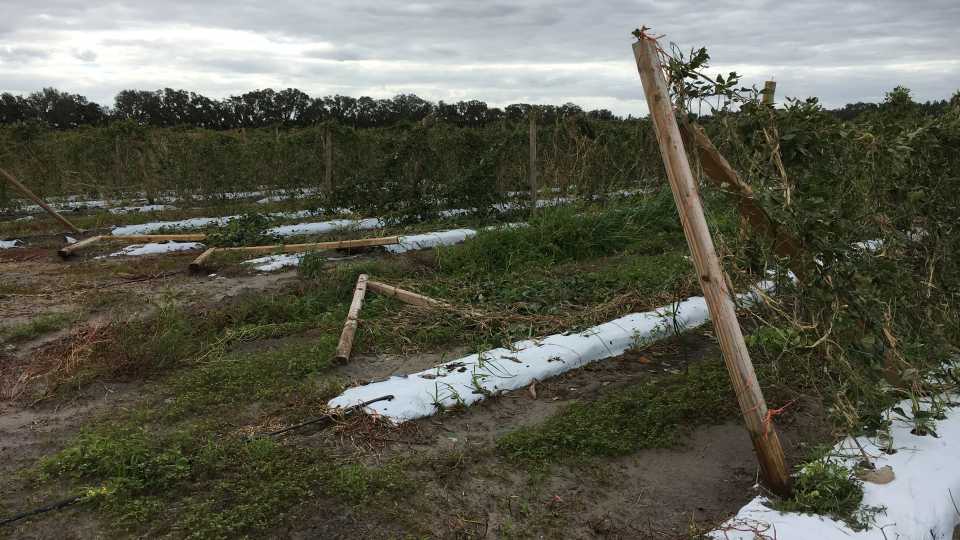
-
1 of 15
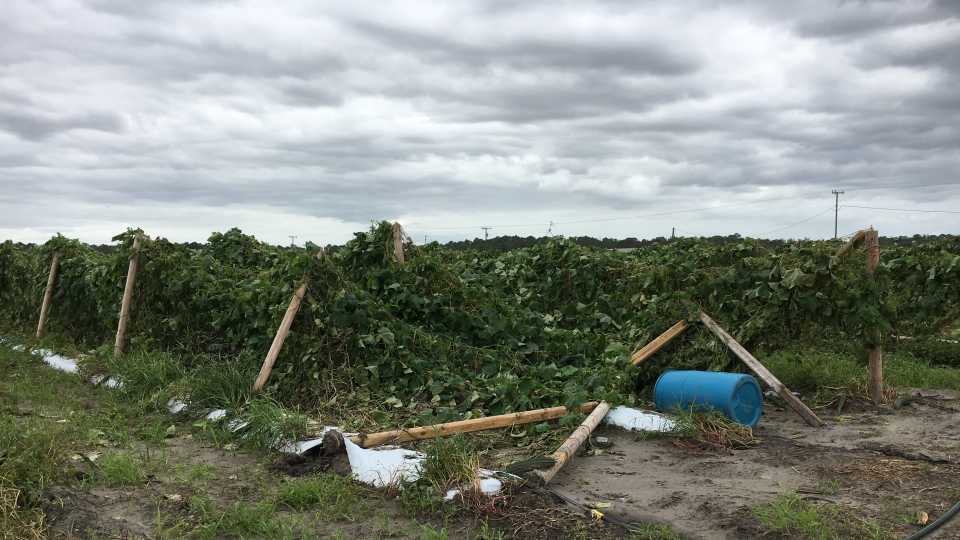
In the Northeast Florida county of St. Johns, Asian vegetables were hit particularly hard by Hurricane Matthew, according to Bonnie Cook Wells, a UF/IFAS Commercial Agriculture Extension Agent. Scenes like this are common across the area.
Photo by Bonnie C. Wells -
2 of 15
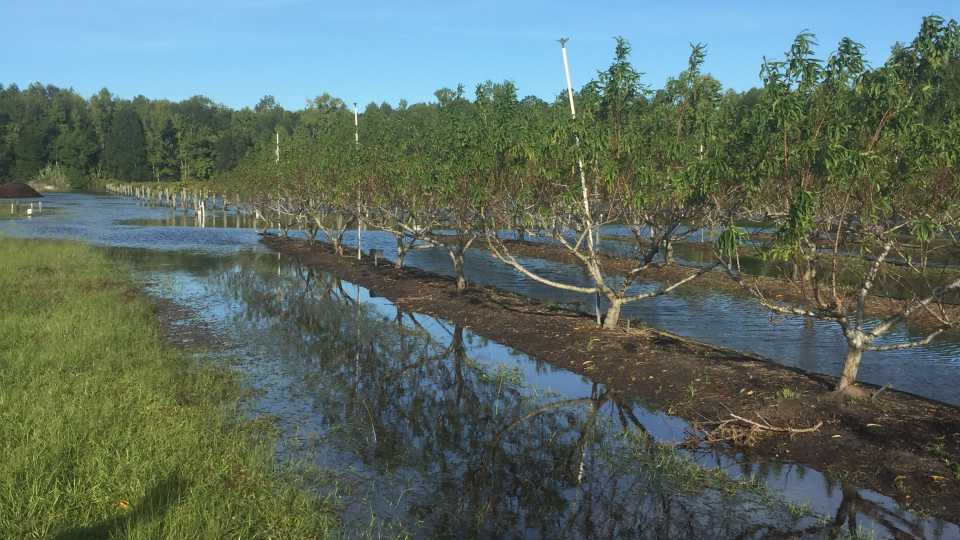
Gary K. England, Director of the UF/IFAS Agricultural Extension Center in Hastings, FL, says this peach tree planting (foreground) and muscadine grape vineyard (background) located near downtown Hastings flooded for two to three days by a combination of 9.5 inches of rainfall -- pre- and during Hurricane Matthew -- plus a tidal surge from the St. Johns River through one of its tributaries.
Photo by Gary K. England -
3 of 15
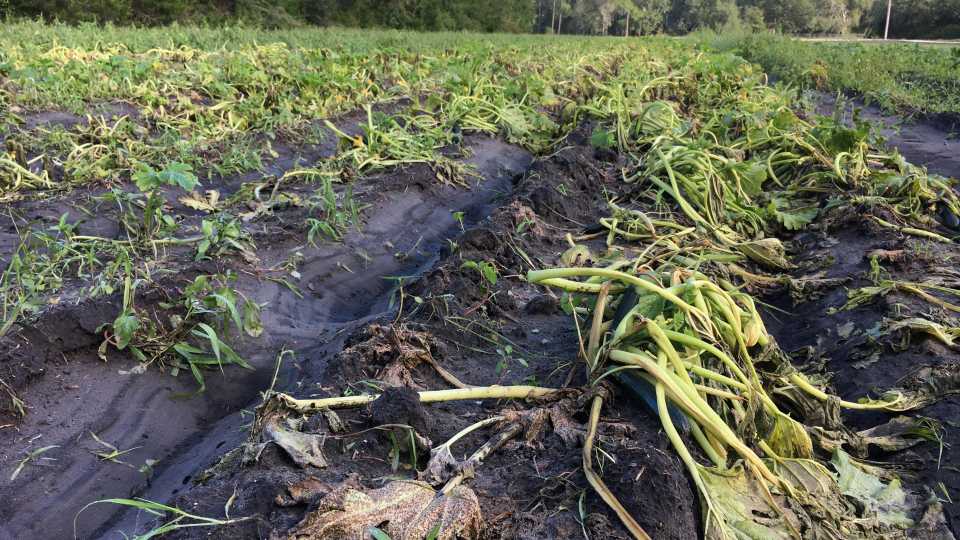
This field of squash in St. Johns County, FL, was slammed by the rain and wind from Hurricane Matthew.
Photo by Bonnie C. Wells -
4 of 15
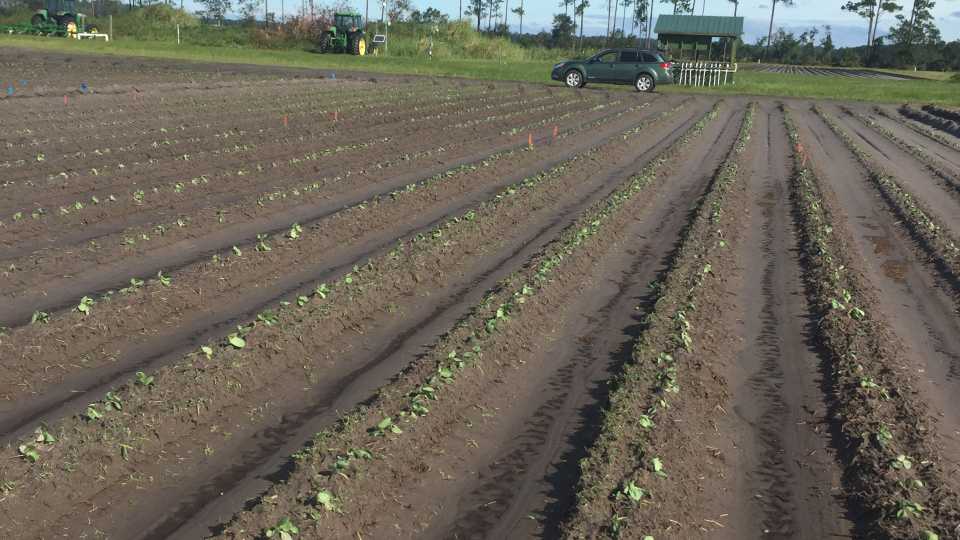
This two-week-old cabbage planting near Hastings, FL, is still mainly alive, but heavily impacted from Hurricane Matthew's deluge.
Photo by Gary K. England -
5 of 15
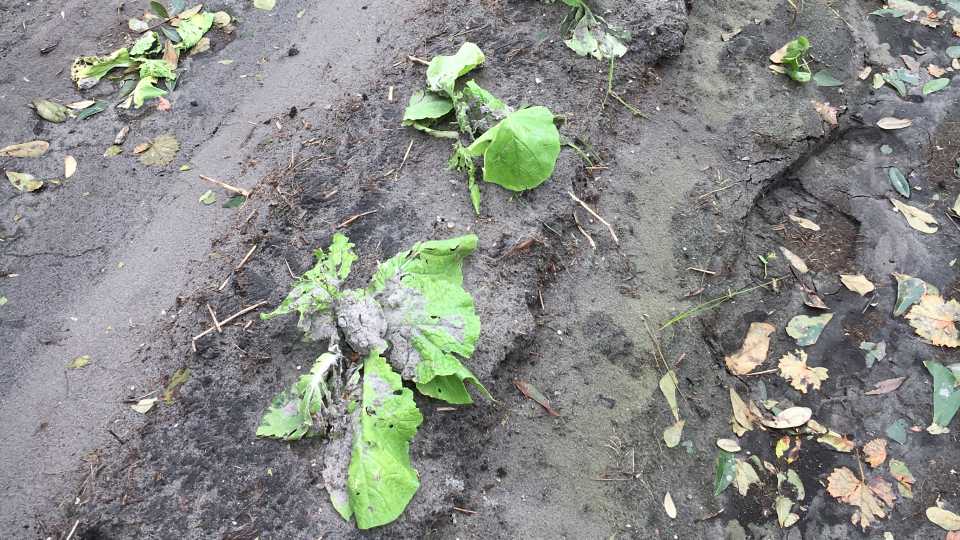
The heavy rain and wind from Hurricane Matthew left these leafy greens dirty, destroyed, and unharvestable.
Photo by Bonnie C. Wells -
6 of 15

Hurricane Matthew made quick work of this trellis of yardlong beans near Hastings, FL.
Photo by Bonnie C. Wells -
7 of 15
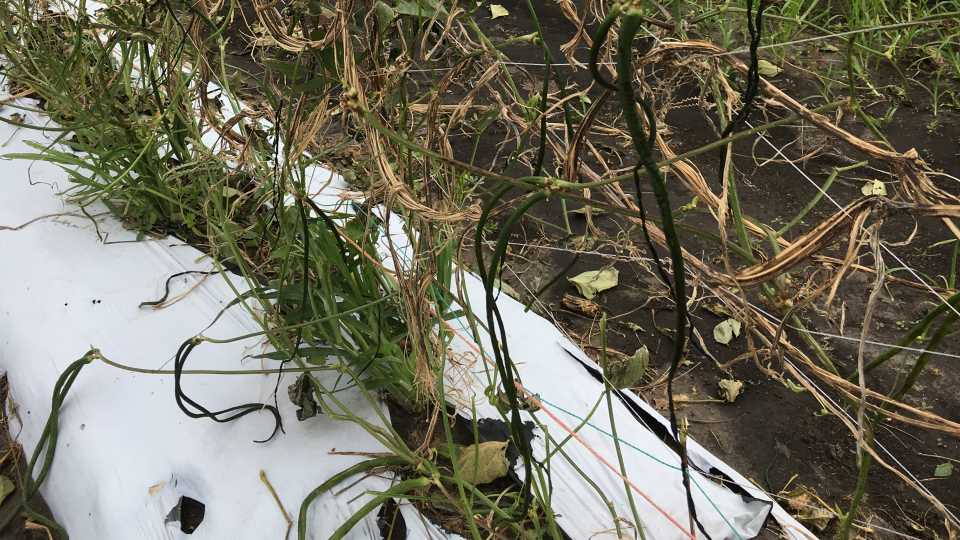
Beds of yardlong beans near Hastings, FL, are now blackened from Hurricane Matthew wind damage.
Photo by Bonnie C. Wells -
8 of 15
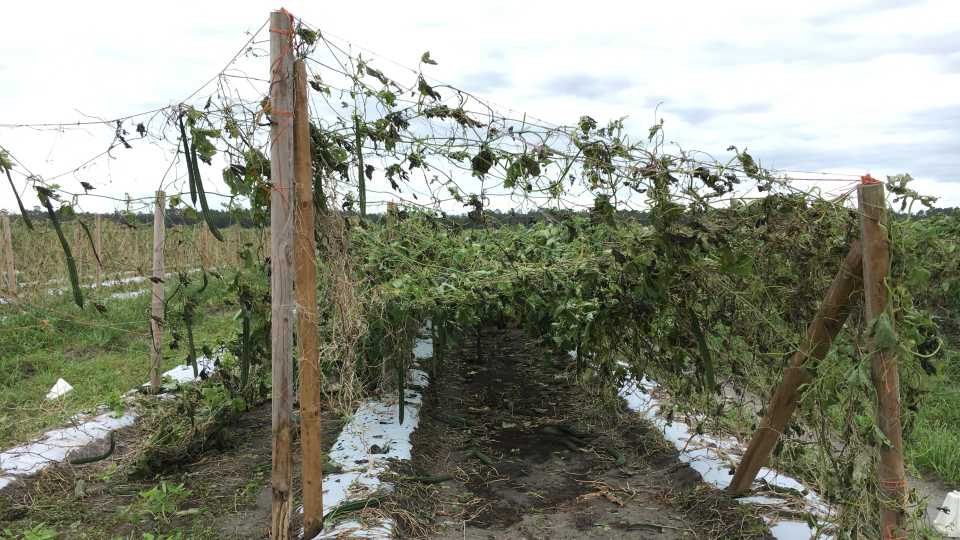
Near Hastings, FL, Hurricane Matthew caused havoc on this trellis of luffa, an Asian vegetable.
Photo by Bonnie C. Wells -
9 of 15
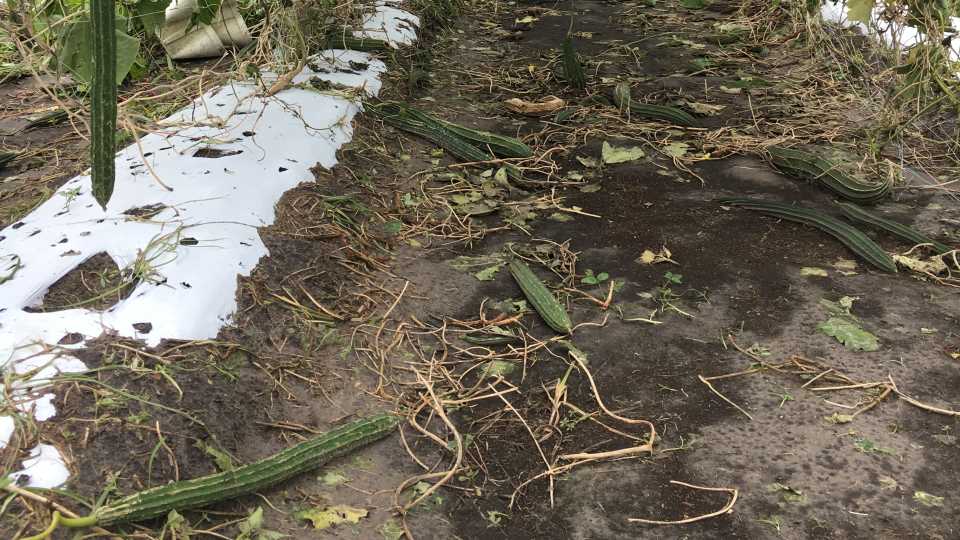
Plenty of luffa fruit were knocked to the ground by Hurricane Matthew's driving wind and rain.
Photo by Bonnie C. Wells -
10 of 15
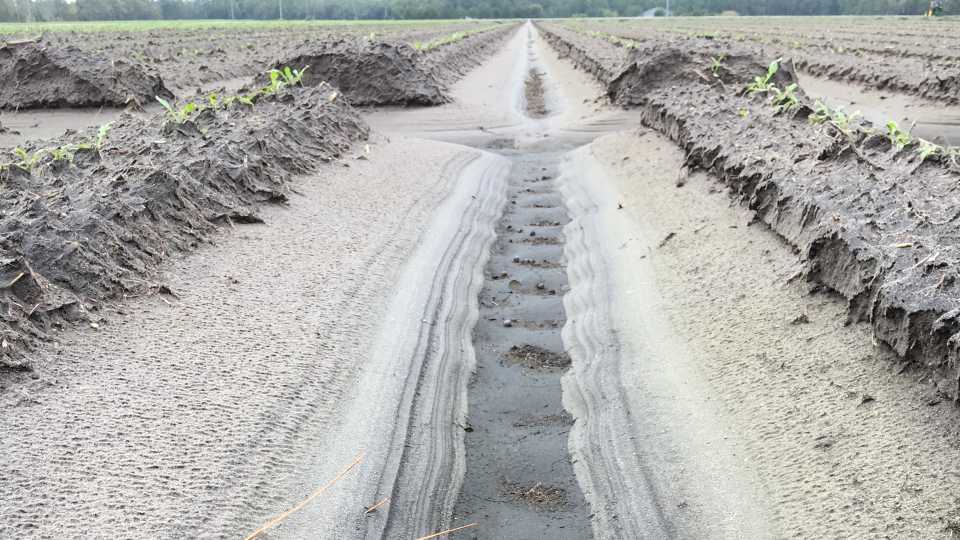
With nearly 10 inches of rain falling from Hurricane Matthew, it's no wonder these vegetable fields near Hastings, FL, look weathered and washed out.
Photo by Bonnie C. Wells -
11 of 15
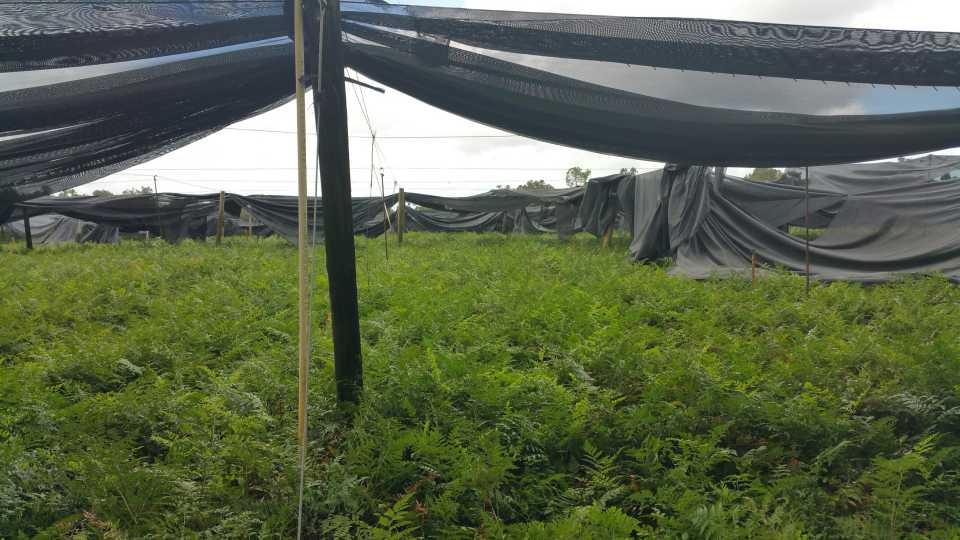
According to Sharon Fox Gamble, Volusia County UF/IFAS Extension Agent, the area's fern/cut foliage industry experienced extreme damage to shade structures. These crops easily sunburn, she says, and will be ruined if growers are not able to figure something out in a hurry.
Photo by Sharon Fox Gamble -
12 of 15
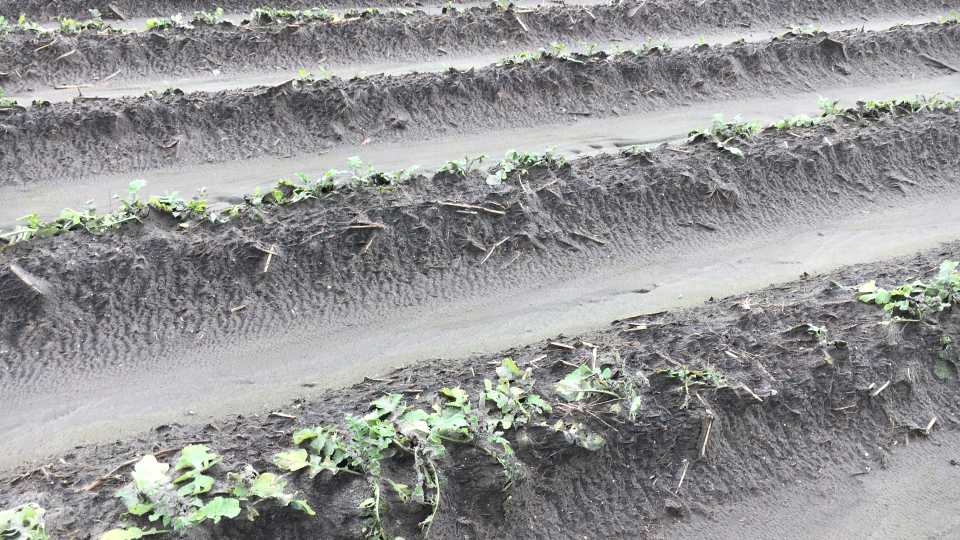
Hurricane Matthew's winds cut this daikon radish field near Hastings, FL, from the roots at the soil line.
Photo by Bonnie C. Wells -
13 of 15
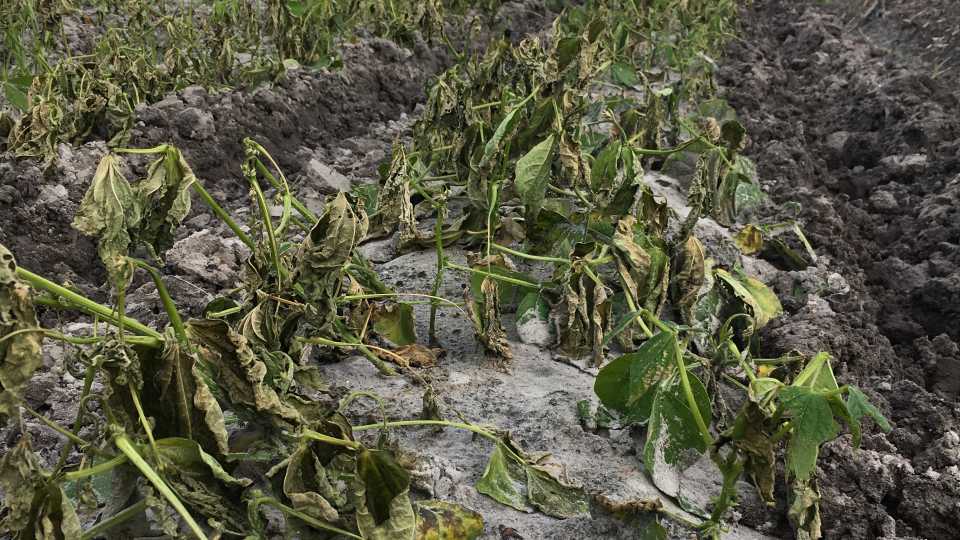
Snap beans were some of the most heavily affected crops in St. Johns County by Hurricane Matthew's wrath.
Photo by Bonnie C. Wells -
14 of 15
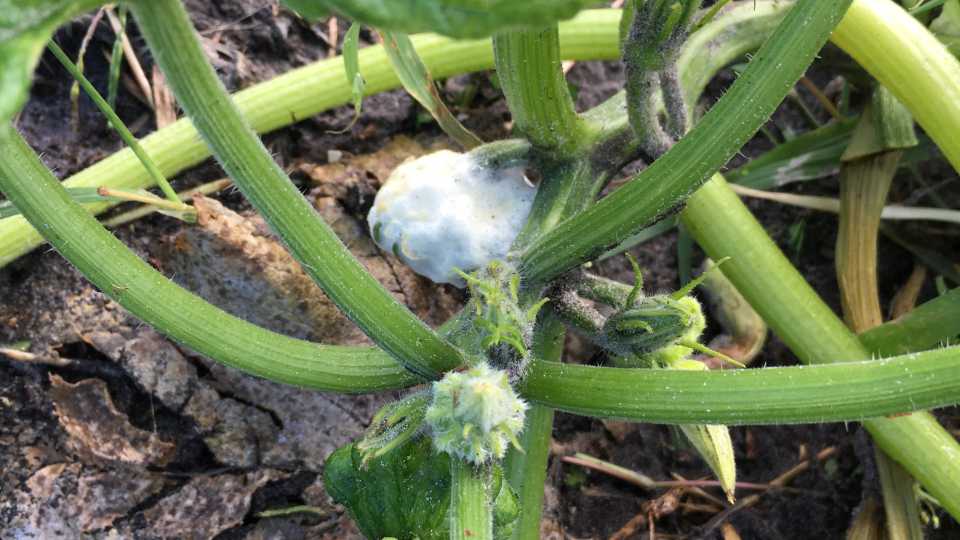
Disease pressure is expected to be high following Hurricane Matthew. Here, rotting and fungal masses are seen on small fruiting pattypan squash near Hastings, FL.
Photo by Bonnie C. Wells -
15 of 15
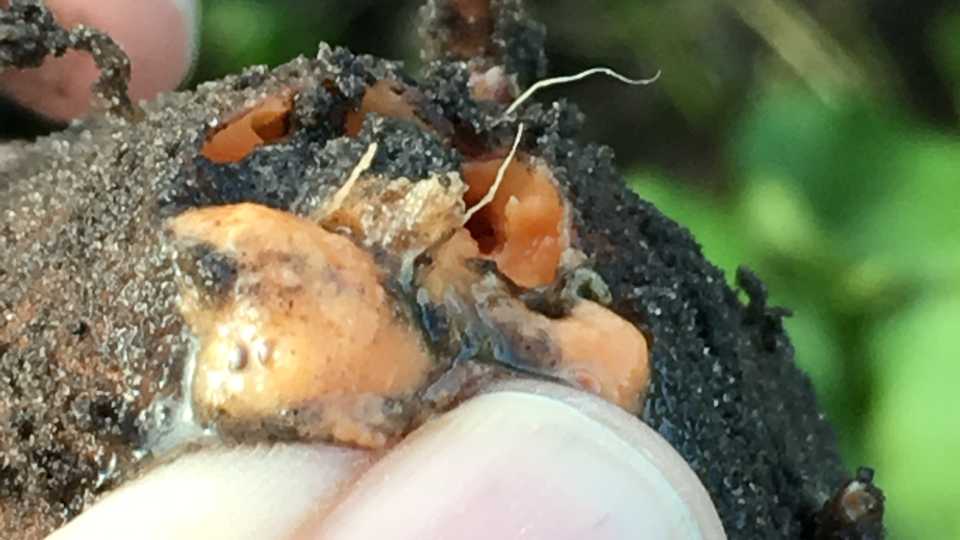
Hurricane Matthew did its damage above the ground and below. This sweet potato is rotting from being water-logged.
Photo by Bonnie C. Wells
View all
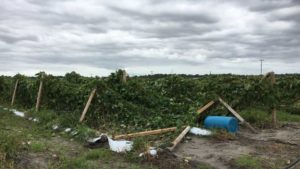
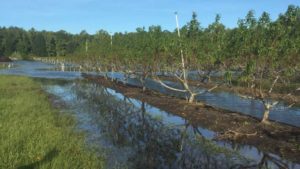
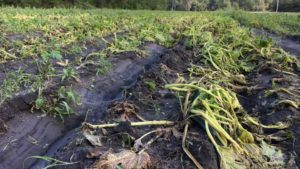
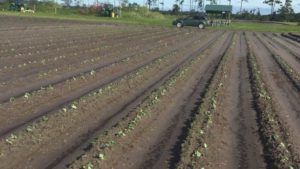
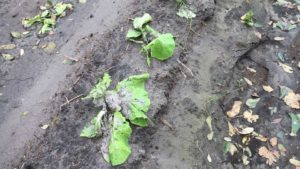
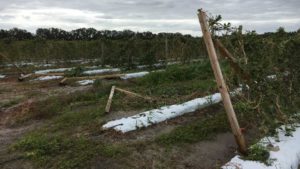
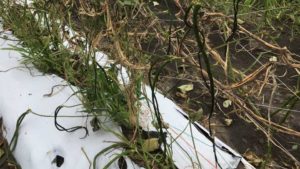
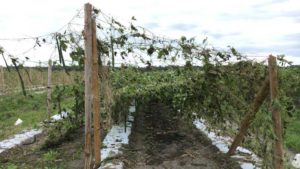
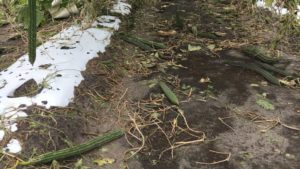
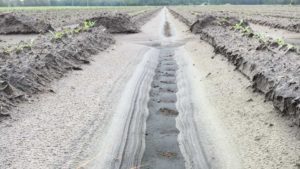
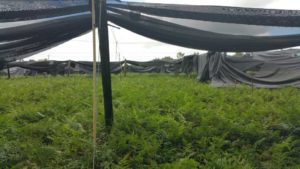
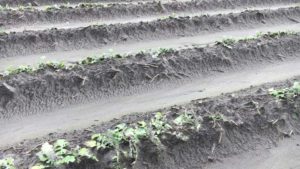
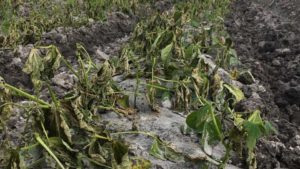
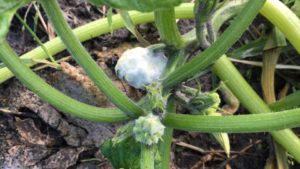
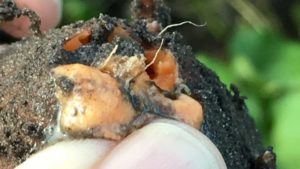
With a dangerous hurricane imminent, we hunkered down and waited. “Prepared for the worst, hoping for the best” was a phrase I heard uttered countless times by talking heads on multiple media channels leading up to the storm’s arrival.
Meanwhile, the rain bands became more persistent with each passing hour and the winds started whipping. All the forecast models were in close agreement that this storm — one the Sunshine State has not seen in more than a decade — was going to impact us one way or another. Fortunately, the 2:00 a.m. (Friday, Oct. 7) update indicated a slight shift to the north and east. This held true as Matthew would hug the coast, churning precariously close, for a grueling 12 to 15 hours.
What Next? What To Do After A Natural Disaster At Your Farm
After the storm passed, the phrase I’ve heard most — especially when talking to growers and others associated with the Florida agriculture industry — was “we dodged a bullet.” And by the way, I want to extend many thanks to those who have provided feedback and shared your intel and imagery with me.
Yes, it certainly could have been worse. However, Matthew still left plenty of marks up and down the eastern side of Florida’s peninsula. The state’s ag sector did not come through unscathed. Check out the slideshow above to find out what’s being seen in the field.
Subscribe Today For

Paul Rusnak is the Senior Online Editor for Meister Media Worldwide's Specialty Crops Division, which consists of American Vegetable Grower, American Fruit Grower, and Greenhouse Grower magazines, all Meister Media brands. He is based in Northeast Florida. See all author stories here.












